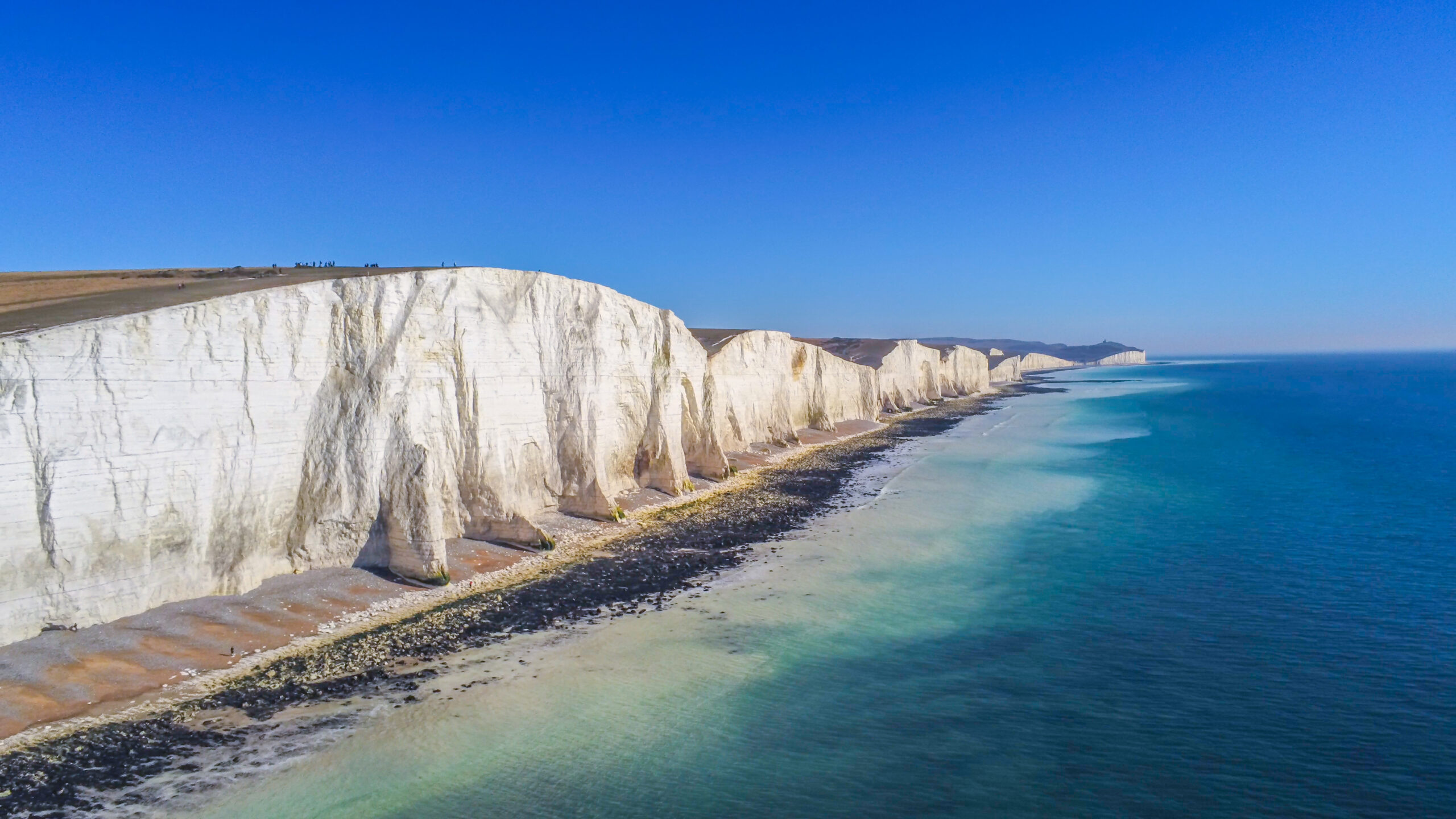Sussex, a historic county on England’s southern coast, is a land defined by contrasts. It is a region where chalk cliffs meet rolling downs, where medieval castles stand beside vibrant seaside towns, and where artistic retreats coexist with ancient battlefields. Steeped in centuries of history yet alive with modern culture, Sussex offers a kaleidoscope of experiences that together create a portrait of one of Britain’s most remarkable counties.
The county’s landscapes are its first great treasure. The South Downs National Park stretches like a green backbone across the region, its chalk hills giving way to hidden valleys, wildflower meadows, and sweeping views of the English Channel. Along the coast, the Seven Sisters and Beachy Head form some of the most dramatic sea cliffs in Europe, while tranquil beaches like West Wittering invite moments of calm. Inland, woodlands, gardens, and rivers weave together a patchwork of habitats that have inspired artists and poets for generations.
History lies around every corner in Sussex. From the Roman mosaics at Fishbourne and Bignor, to the Norman strongholds of Arundel and Bodiam, to the battleground of 1066 at Battle, Sussex has been a stage for pivotal moments in English history. Villages like Alfriston and Amberley preserve medieval charm, while stately homes such as Petworth and Goodwood reflect centuries of aristocratic grandeur.
Yet Sussex is not only about its past—it is equally about culture, creativity, and celebration. Brighton buzzes with cosmopolitan energy, while Glyndebourne and Charleston are world-renowned centers of music and art. Local traditions live on in rural festivals, crafts, and communities that keep the spirit of the county alive.
To explore Sussex is to discover a place of diversity and depth, where every landscape tells a story and every town or village has a unique character. The following 30 places represent the very best of Sussex: its landscapes, its history, its creativity, and its enduring charm.
Brighton
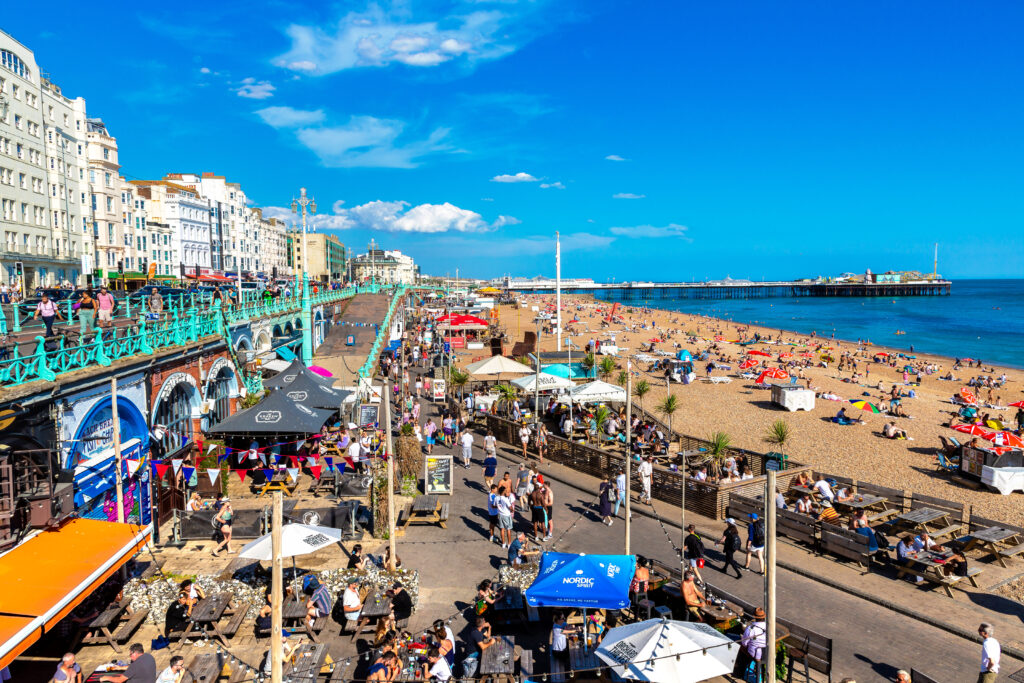
Brighton is perhaps the most vibrant and cosmopolitan city on the south coast of England. Known for its creative spirit, seaside charm, and inclusive culture, Brighton embodies a unique blend of history and modernity. Its seafront, with the iconic Palace Pier stretching into the Channel, offers amusements, arcades, and sea air that recall the golden age of the British seaside holiday.
The Royal Pavilion, built in the early 19th century for George IV, is Brighton’s most distinctive landmark. With its Indian-style domes and Chinese-inspired interiors, it reflects the extravagance of the Regency era. Just a short walk away, the Lanes—a maze of narrow streets—are filled with independent shops, antique stores, and cafés, making them a delight to explore.
Brighton is also a cultural capital. The Brighton Festival and Fringe attract international performers each spring, while the city’s theatres, galleries, and live music venues ensure year-round entertainment. Its reputation as a progressive, welcoming community is reflected in its thriving scene and its reputation as the “London by the sea.”
What makes Brighton truly special is its ability to balance tradition with creativity. It is a city where history is respected but never allowed to stagnate, where seaside nostalgia sits comfortably beside cutting-edge art and nightlife.
Lewes
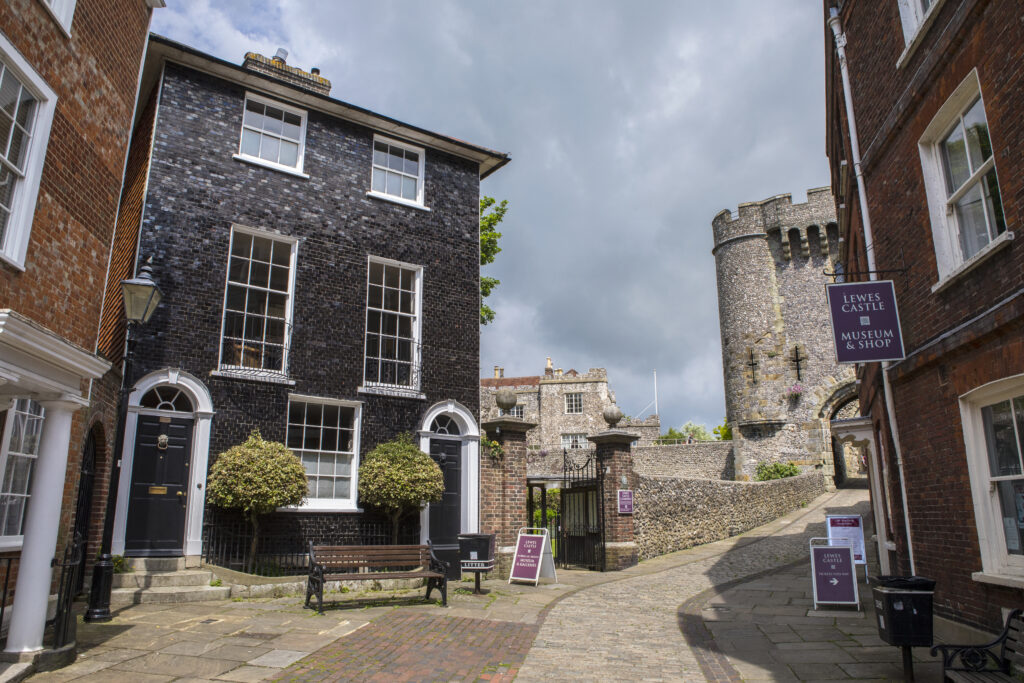
Set among the rolling hills of the South Downs, Lewes is a town where history feels alive in every street. Its medieval layout, flint walls, and narrow lanes create a sense of continuity with the past. At the heart of the town stands Lewes Castle, built shortly after the Norman Conquest, which offers sweeping views of the surrounding countryside.
Lewes is also known for its role in English history. The Battle of Lewes in 1264 was a turning point in the struggle between monarchy and Parliament. Today, the Anne of Cleves House, gifted to Henry VIII’s fourth wife, preserves Tudor domestic life. The town’s many bookshops, antique stores, and markets contribute to its reputation as a place of character and curiosity.
One of Lewes’s most famous traditions is the Bonfire Night celebrations, the largest in the country. Each November, the streets fill with torchlit processions, effigies, and fireworks, commemorating both Guy Fawkes and local Protestant martyrs.
Lewes is not merely a historical relic; it is a thriving cultural hub, with a strong sense of community and a distinctive independent spirit. It balances heritage with creativity, making it one of Sussex’s most memorable towns.
Hastings
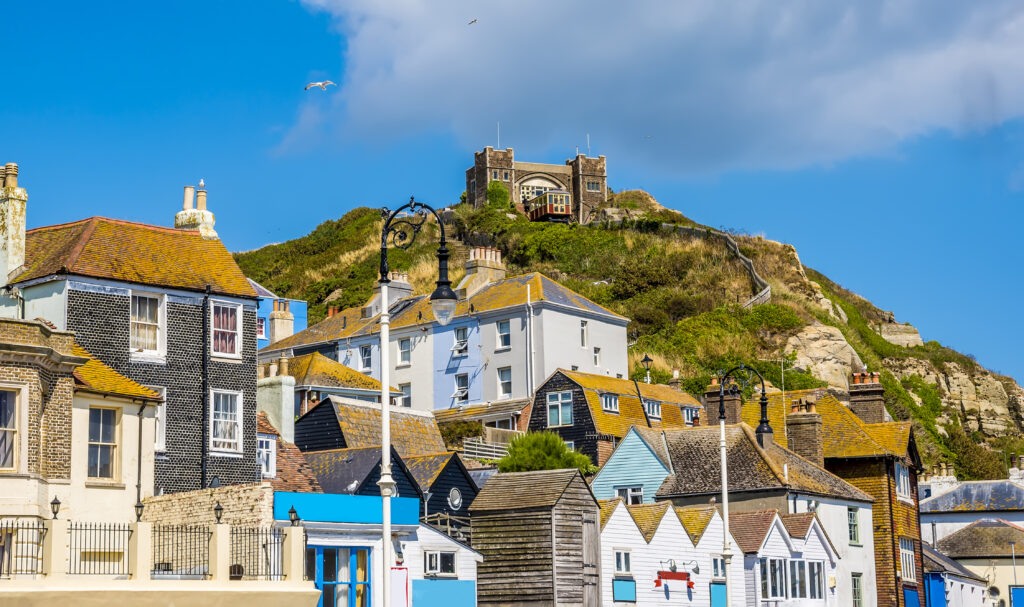
Hastings, once one of England’s most important medieval ports, is a town of resilience and reinvention. Its historic Old Town is a charming maze of timber-framed houses, narrow passageways known as “twittens,” and quirky shops. Overlooking it all are the ruins of Hastings Castle, built by William the Conqueror after 1066.
The town’s seafront is equally distinctive. The Net Shops, tall black wooden sheds, are unique to Hastings and symbolize its long fishing heritage. The town still boasts the largest beach-launched fishing fleet in Europe, and fresh seafood is sold directly on the shore.
In recent years, Hastings has embraced culture and creativity. The Jerwood Gallery (now Hastings Contemporary) showcases modern British art, while annual events such as the Jack in the Green Festival and the Hastings Pirate Day celebrate local folklore and eccentricity.
What sets Hastings apart is its dual character: part ancient town, part bohemian haven. It combines maritime tradition with a strong artistic identity, offering visitors a lively mix of history, culture, and seaside charm.
Battle
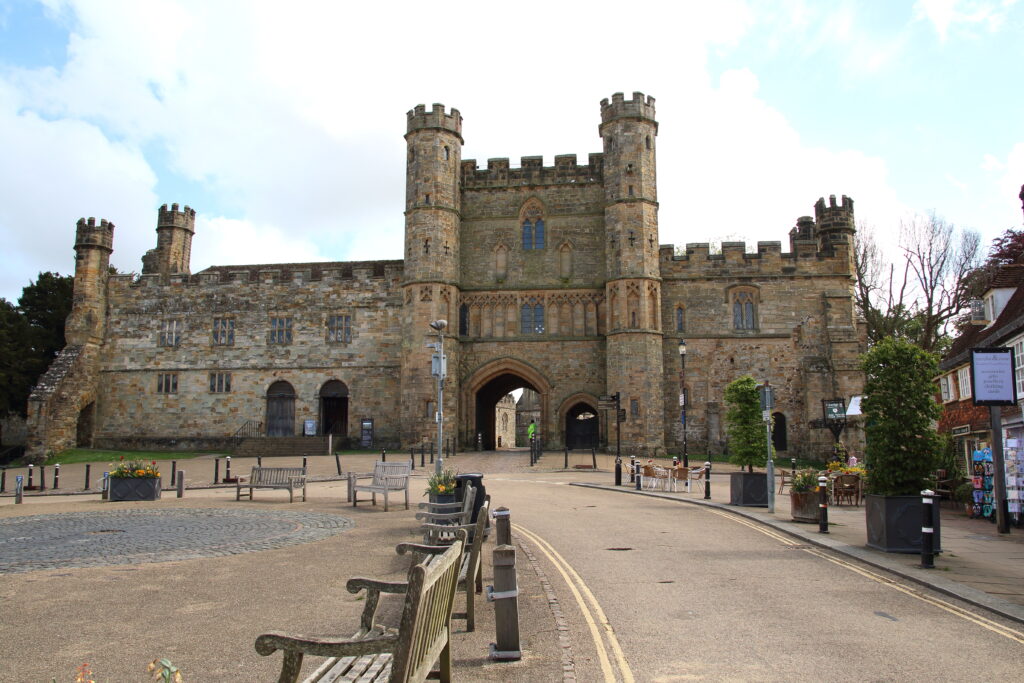
Few places in England carry such historical weight as Battle, named after the most famous conflict in English history: the Battle of Hastings in 1066. On the very site where William the Conqueror defeated King Harold II, Battle Abbey was founded as a gesture of penance. Its ruins and visitor center bring the story of the Norman Conquest vividly to life.
The battlefield itself remains a place of reflection, where the fate of a nation was decided. Walking the fields offers both historical insight and a quiet sense of connection to the past. The abbey’s surviving structures, including the atmospheric gatehouse, are reminders of the centuries of monastic life that followed.
Beyond its battlefield, Battle is a picturesque town, with Georgian cottages, independent shops, and inviting tea rooms. It is a place where history and modern life blend seamlessly, and where the story of England’s medieval beginnings can still be felt underfoot.
Eastbourne & Beachy Head
Eastbourne, with its Victorian seafront, elegant pier, and wide promenade, represents the classic English seaside resort. Its well-kept gardens, theatres, and galleries reflect the town’s cultural aspirations, while the annual Eastbourne International tennis tournament draws global attention.
Just beyond the town lies Beachy Head, the highest chalk sea cliff in Britain. Rising 162 meters above the English Channel, it offers breathtaking views along the coast, including the dramatic sweep of the Seven Sisters cliffs. The red-and-white striped Beachy Head Lighthouse at its base is an iconic landmark.
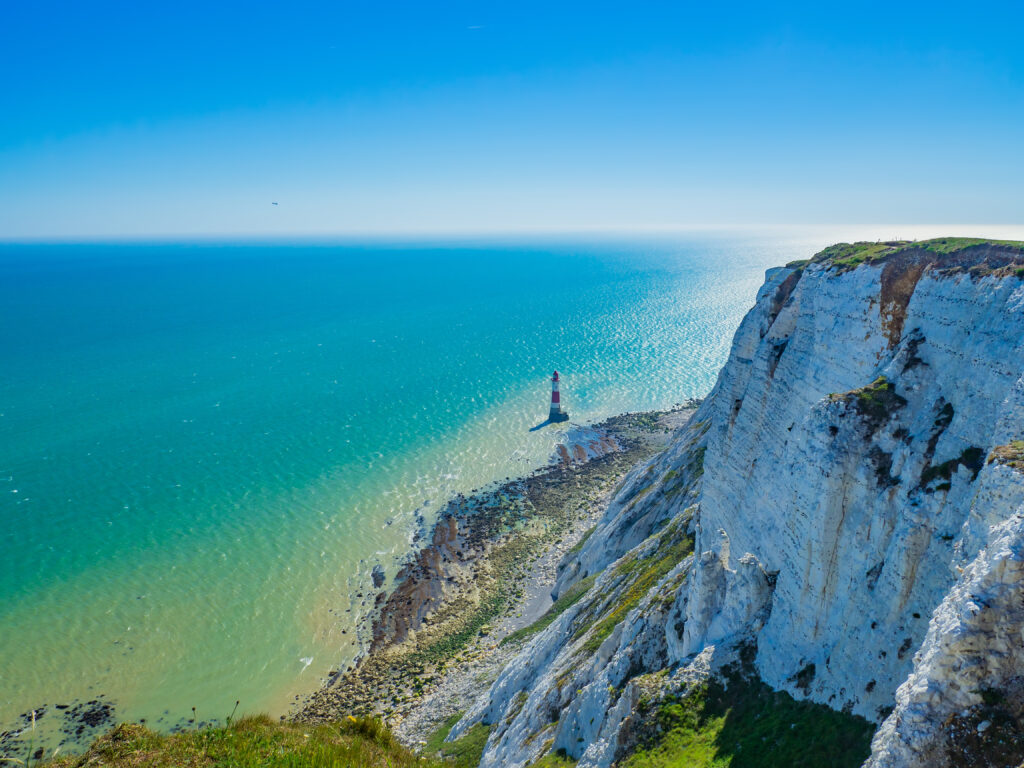
The contrast between Eastbourne’s refined leisure and Beachy Head’s raw natural drama makes this area particularly special. It is a place where culture and landscape meet—where visitors can enjoy the charms of a seaside town one moment and the wild majesty of England’s coastline the next.
Rye

Perched on a hilltop overlooking the Romney Marshes, Rye is one of England’s best-preserved medieval towns. Once a member of the powerful Cinque Ports confederation, it was a strategic harbor, though the sea has long since retreated. Today, it enchants visitors with its cobbled streets, half-timbered houses, and centuries-old inns.
The town’s most famous street, Mermaid Street, is lined with crooked medieval buildings, including the historic Mermaid Inn, a favorite haunt of smugglers in the 18th century. The Ypres Tower, dating to the 14th century, stands as a reminder of Rye’s defensive past. Meanwhile, the Parish Church of St. Mary’s dominates the skyline, its tower offering panoramic views of the town and surrounding countryside.
Rye is also known for its literary and artistic heritage. Writers such as Henry James and E. F. Benson once lived here, while contemporary galleries and festivals keep the town’s cultural spirit alive. The nearby Camber Sands—a vast stretch of golden beach—adds natural beauty to the area.
What makes Rye so special is its timelessness. It feels like a living museum, where layers of history and character coexist harmoniously. To wander its streets is to step back through centuries while still feeling the vibrancy of a community that thrives today.
Camber Sands
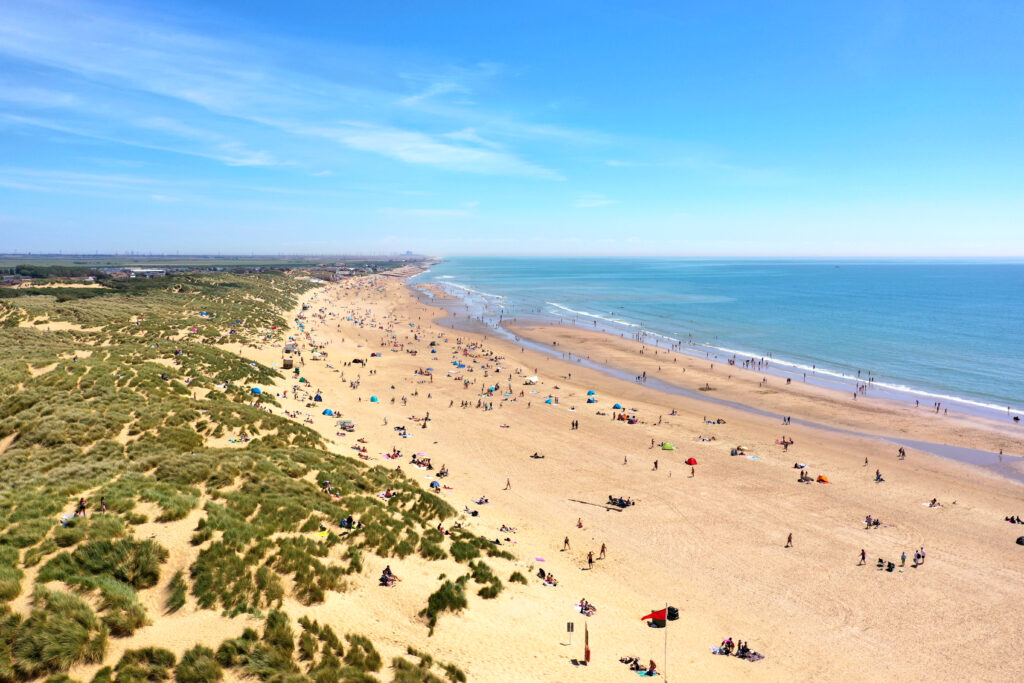
This beach is famous for its long dune ridges that lead to miles of soft golden sandy beaches. Camber has been the location for many films, especially when “desert shots” are required.
If you are planning a day in the sand, it is worth checking the local tide tables, as the extensive shallows at low tide make for a very long walk before it is deep enough to swim.
With such a large open space, power kites are a popular pastime—a very colorful sight. It gets very crowded during the summer months.
Chichester
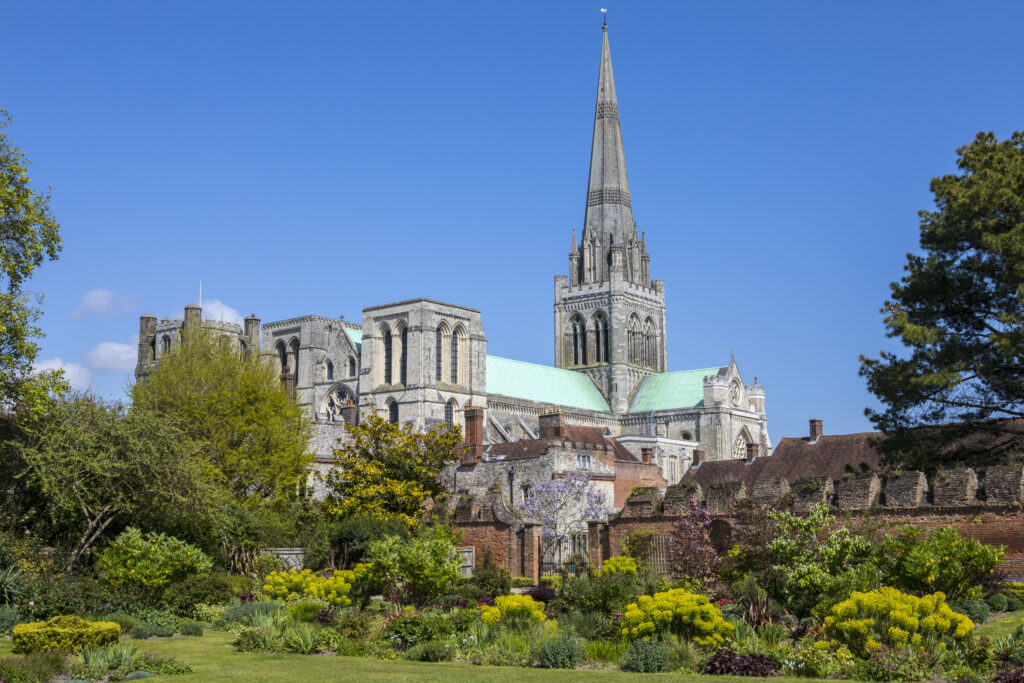
Chichester, the county’s only city, blends Roman foundations, medieval grandeur, and a lively cultural scene. Its defining feature is the Chichester Cathedral, begun in 1075. With its graceful spire, striking blend of Norman and Gothic architecture, and modern additions like the Marc Chagall stained-glass window, it is one of the most beautiful cathedrals in England.
The city’s Roman origins are still visible in the remnants of walls that enclose the center, forming a compact grid of streets. At the crossroads stands the Market Cross, a 16th-century monument and a focal point of local life.
Chichester is also a cultural hub. The Chichester Festival Theatre, renowned for world-class productions, has launched many plays to the West End and Broadway. Nearby, Pallant House Gallery houses an exceptional collection of modern British art.
The city’s location adds to its appeal: the South Downs National Park lies to the north, while to the south stretch the harbors and beaches of Chichester Harbour, a haven for sailors and birdwatchers.
Chichester’s unique charm lies in its balance of history and culture, its Roman past and medieval heart sitting comfortably alongside a vibrant modern identity.
Arundel
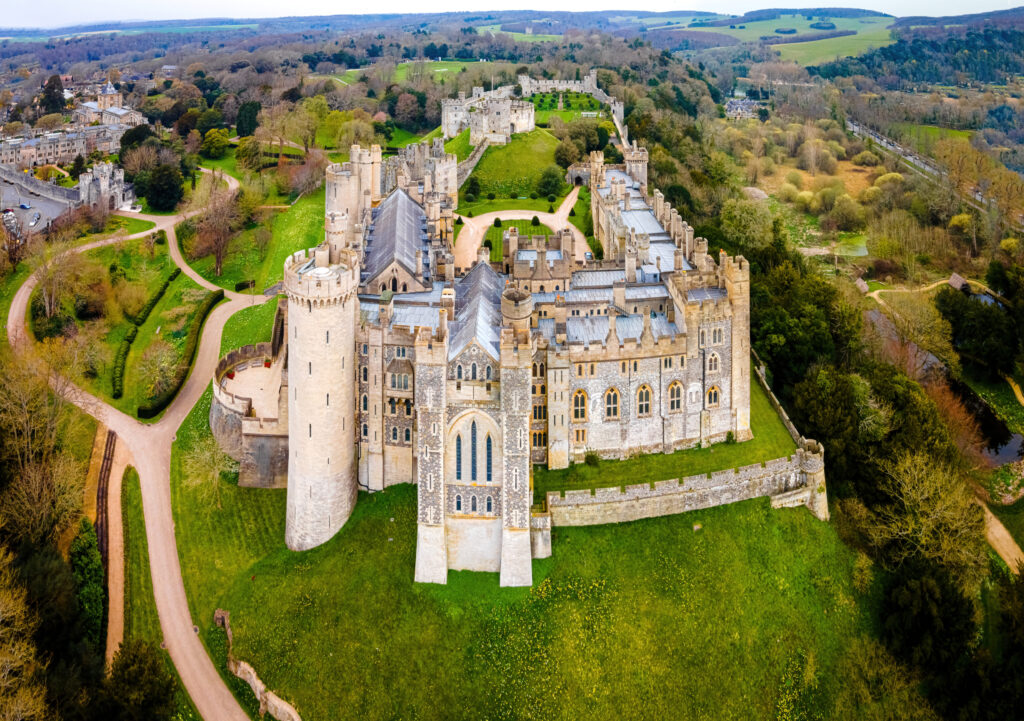
Dominated by the majestic Arundel Castle, the town of Arundel is one of the jewels of Sussex. The castle, seat of the Dukes of Norfolk for nearly a thousand years, is an extraordinary example of medieval and Victorian grandeur. Its imposing battlements, lavish interiors, and spectacular gardens make it one of the finest stately homes in England.
Below the castle, the town itself is full of character, with antique shops, galleries, and riverside walks along the River Arun. The Arundel Cathedral, a striking Gothic Revival building, adds to the town’s skyline, complementing the castle’s dominance.
Each summer, the Arundel Festival of Arts transforms the town into a celebration of music, theatre, and visual art, while the International Medieval Jousting Tournament at the castle draws enthusiasts from around the world.
Arundel’s charm is its sense of timelessness: a living town that has preserved its historic character while embracing cultural life. The combination of its dramatic castle, vibrant community, and riverside setting makes it one of the most captivating places in Sussex.
Petworth
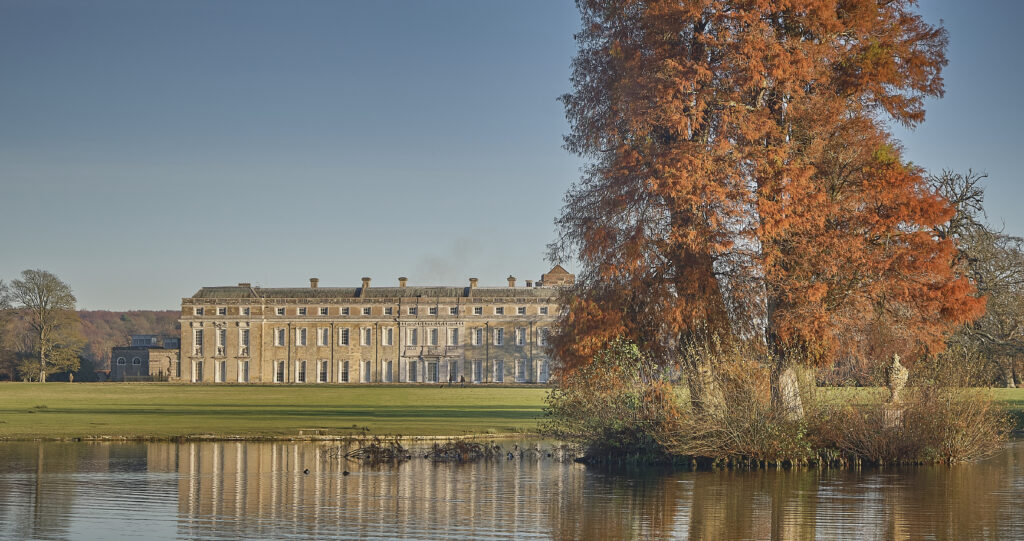
Set in the heart of West Sussex, Petworth is a market town defined by its connection to art and aristocracy. At its center lies Petworth House, a grand 17th-century mansion now under the care of the National Trust. Inside, it houses one of the most important art collections in Britain, with works by Turner, Van Dyck, and Reynolds among its treasures.
The surrounding Petworth Park, landscaped by Capability Brown, is equally remarkable. Its rolling grasslands and ancient trees inspired J. M. W. Turner, who painted many scenes of the park. Deer still roam freely, adding to the pastoral atmosphere.
The town itself is known for its antique shops and independent boutiques, which attract collectors and browsers alike. Petworth’s Georgian architecture and winding streets add charm, while regular cultural events, such as the Petworth Festival, celebrate music and the arts.
Petworth is a place where art, history, and landscape come together. It represents the grandeur of England’s country house tradition while remaining a welcoming, vibrant community. Its beauty is not only in its treasures but in the harmony between human creativity and the natural world.
Charleston
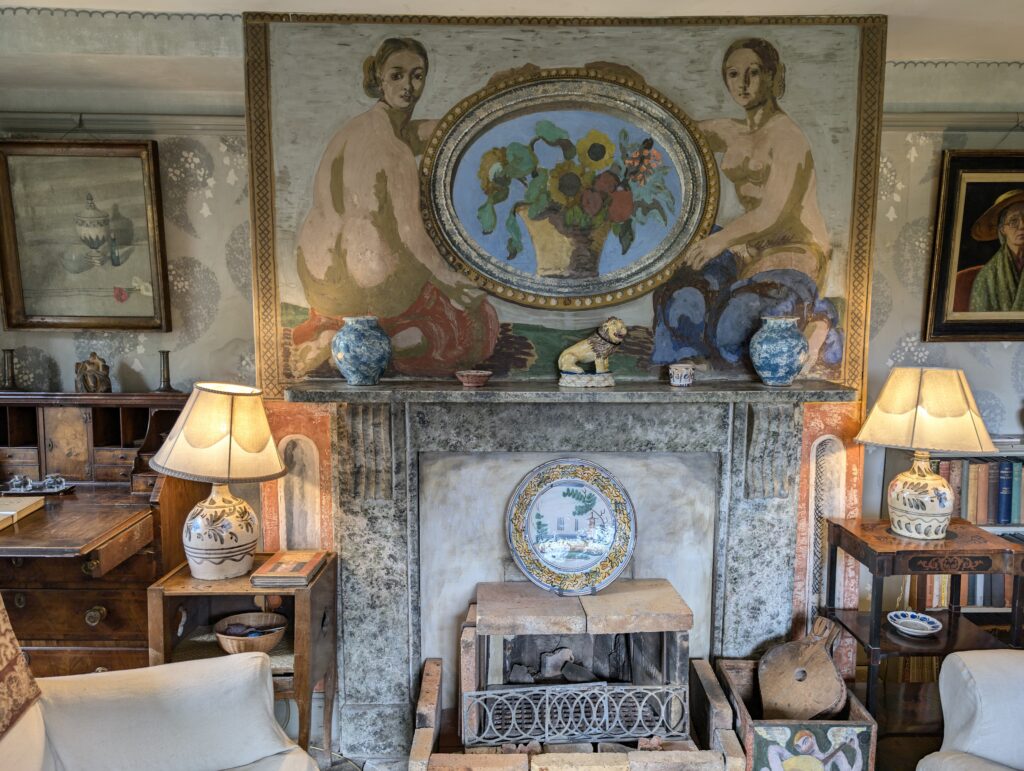
Nestled in the South Downs near Firle, Charleston was the country retreat of the Bloomsbury Group, one of the most influential circles of artists, writers, and intellectuals of the early 20th century. The farmhouse was home to painters Vanessa Bell and Duncan Grant, who transformed its interiors into a living work of art.
Every surface—walls, doors, fireplaces, and furniture—was painted with bold patterns, colors, and designs, creating an immersive environment that reflected the group’s experimental spirit. Charleston became a meeting place for figures like Virginia Woolf, John Maynard Keynes, and E. M. Forster, where ideas about art, literature, and society flowed as freely as the conversation.
Today, Charleston is preserved as a museum, offering a rare glimpse into a bohemian world that challenged Edwardian conventions. The surrounding gardens, with their Mediterranean influences, are equally enchanting, full of flowers, sculptures, and hidden corners.
Charleston is not just a house—it is a symbol of creativity, freedom, and artistic innovation. It represents the fusion of domestic life with avant-garde art, a place where the boundaries between living and creating were joyfully blurred.
Glyndebourne
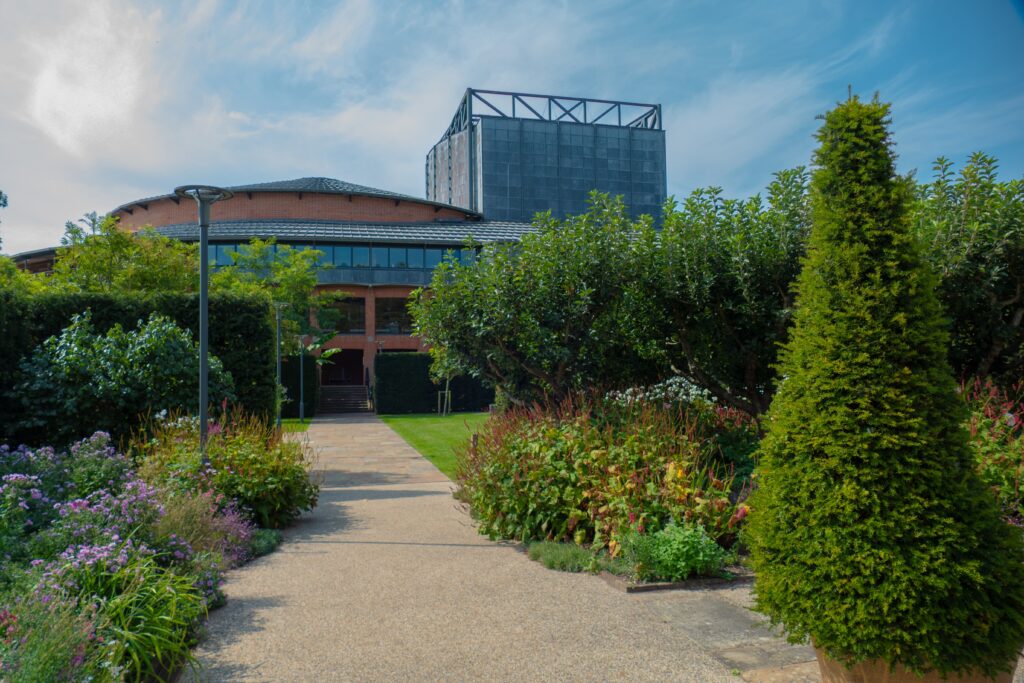
Tucked away in the countryside near Lewes, Glyndebourne is one of the world’s most prestigious opera houses. Founded in the 1930s by John Christie and his wife, soprano Audrey Mildmay, it has grown into a cultural institution renowned for its summer Glyndebourne Festival Opera.
What makes Glyndebourne so extraordinary is not only the quality of the productions—on par with the great houses of Europe—but also the setting. Performances are staged in a state-of-the-art theatre surrounded by rolling Sussex countryside. Guests dress formally, and the long dinner interval is spent picnicking on the lawns, creating a uniquely English blend of refinement, tradition, and artistry.
Glyndebourne’s repertoire ranges from Mozart to contemporary composers, with productions celebrated for their innovation and attention to detail. For many, a visit here is a rite of passage, blending world-class opera with the intimate, rural charm of Sussex.
It is this contrast—the cutting-edge within the pastoral—that makes Glyndebourne unforgettable: a cultural beacon hidden among fields and hills.
Alfriston
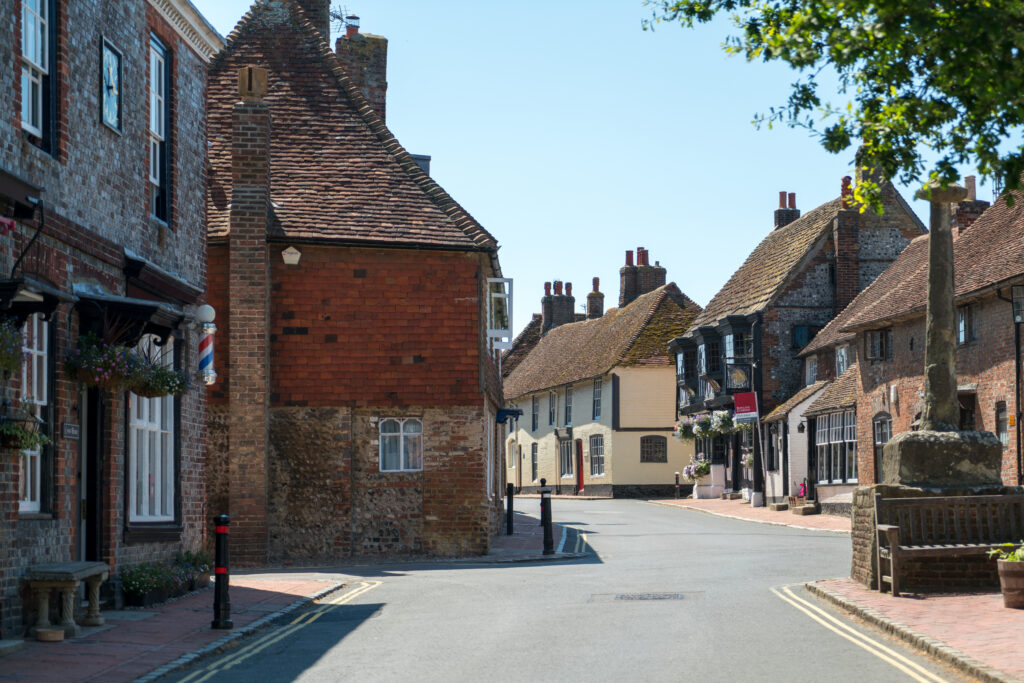
Nestled in the Cuckmere Valley, Alfriston is one of Sussex’s most picturesque villages. Its timber-framed cottages, medieval church, and historic inns create the atmosphere of a place untouched by time.
At the heart of the village stands St. Andrew’s Church, often called the “Cathedral of the Downs” for its size and beauty. Beside it is the Clergy House, the first property ever acquired by the National Trust, setting a precedent for heritage conservation in Britain.
Alfriston’s High Street is lined with tea rooms, independent shops, and pubs, including the Star Inn, which dates back to the 15th century. The village’s location makes it a perfect base for exploring the surrounding countryside, including walks to Cuckmere Haven and the South Downs Way.
What makes Alfriston special is its blend of history and tranquility. It feels authentically rural yet culturally significant, a village that has preserved its soul while welcoming visitors warmly.
Devil’s Dyke
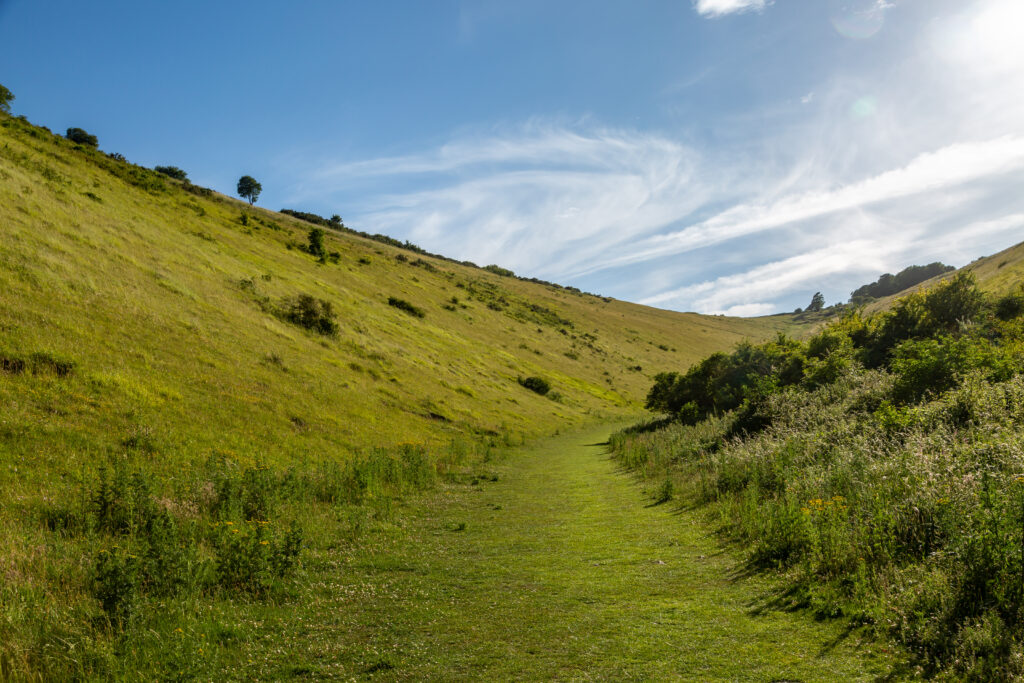
On the outskirts of Brighton, the Devil’s Dyke is one of the most iconic landmarks of the South Downs. This deep, steep-sided valley stretches nearly a mile, carved naturally into the chalk landscape. Its name comes from folklore: legend claims the devil dug the chasm to flood the churches of the Weald, but was thwarted when dawn broke.
Today, Devil’s Dyke is celebrated for its panoramic views—stretching across Sussex to the sea and, on a clear day, as far as the Isle of Wight. The site is also a hub for outdoor activities: walkers follow the South Downs Way across its ridges, while paragliders launch into the open skies, taking advantage of the updrafts created by the valley’s unique shape.
In the 19th century, Devil’s Dyke was a major tourist attraction, with a funfair, railway, and cable car. While these are gone, its natural grandeur remains, offering a striking reminder of the drama and scale of the South Downs.
Cuckmere Haven
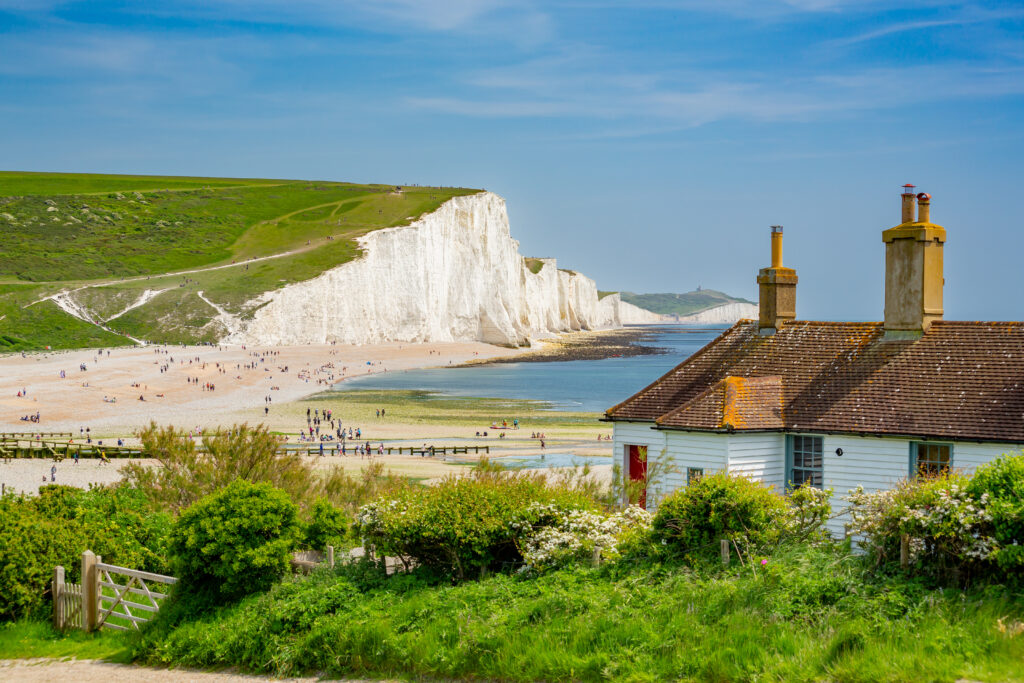
At the mouth of the River Cuckmere lies Cuckmere Haven, one of Sussex’s most iconic natural sites. Here, the river winds in gentle meanders across a wide floodplain before meeting the English Channel, framed by the dramatic cliffs of the Seven Sisters.
The view of the cottages at Coastguard Cottages, with the chalk cliffs rising behind them, is one of the most photographed scenes in England. Beyond its beauty, the area is rich in wildlife, with saltmarsh, wetlands, and shingle beach habitats supporting a diverse range of birds and plants.
Cuckmere Haven is also a place of human history. During World War II, it was heavily fortified, and remnants of pillboxes and tank traps still dot the landscape. Yet today it feels peaceful, a place where nature dominates once more.
What makes Cuckmere Haven so special is its combination of tranquility, drama, and symbolism. It represents both the timeless beauty of the Sussex coast and the resilience of the landscape through centuries of change.
West Wittering Beach
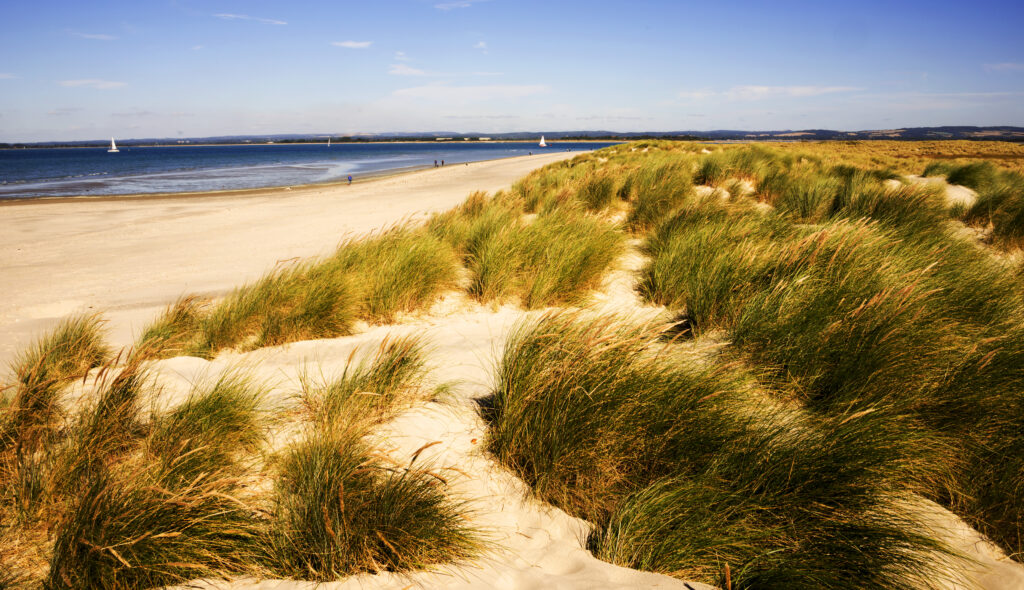
On the western edge of Sussex lies West Wittering Beach, a broad expanse of golden sand that rivals any in southern England. Unlike the pebble beaches common to much of the Sussex coast, West Wittering offers fine sand, shallow waters, and wide dunes, making it a favorite for families, swimmers, and picnickers.
The beach is backed by East Head, a pristine sand dune spit that forms part of a Site of Special Scientific Interest. Its habitats support rare plants and migratory birds, adding ecological significance to its natural beauty. At low tide, vast sand flats emerge, providing space for beachcombing and exploration.
West Wittering is also popular with water sports enthusiasts, from windsurfers to paddleboarders, while the views across Chichester Harbour to Hayling Island and the Isle of Wight give it a special sense of place.
What sets it apart is its combination of natural beauty, recreational appeal, and tranquility. It feels unspoiled, a rare jewel where the sea, sand, and sky merge in harmony.
Fishbourne Roman Palace
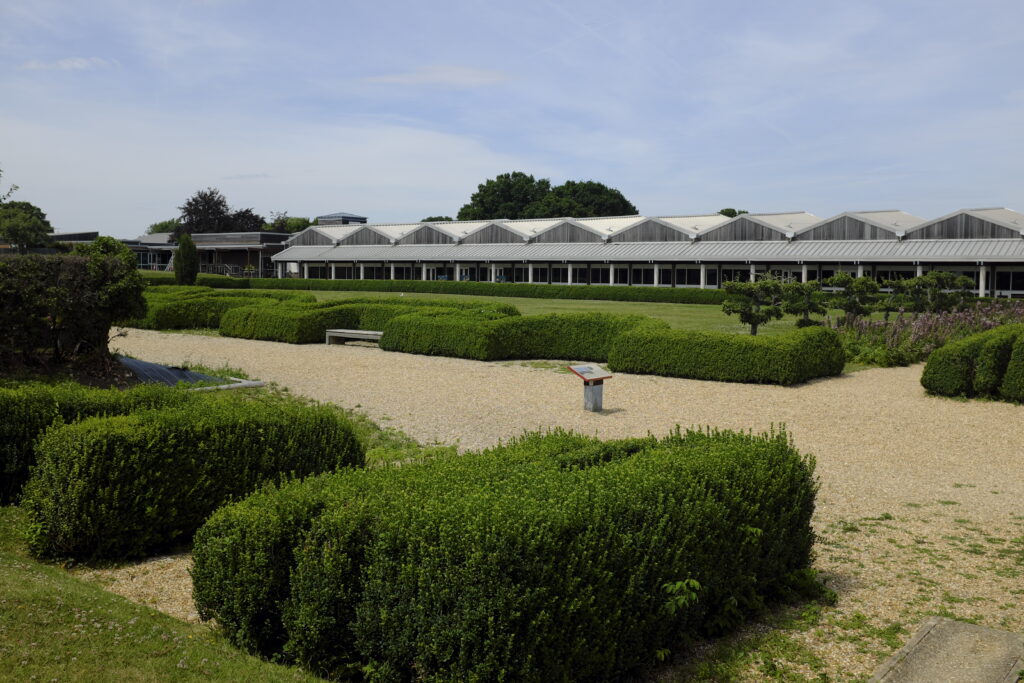
Near Chichester lies Fishbourne Roman Palace, the largest Roman residence ever discovered in Britain. Built around AD 75, it was an opulent complex, rivaling villas found in Italy itself. Archaeologists believe it may have been the home of a local king allied with Rome.
The palace’s most extraordinary feature is its mosaic floors. Covering thousands of square feet, they include intricate designs such as the famous “Cupid on a Dolphin.” Walking through the remains, one can still sense the grandeur of the villa, with its gardens, baths, and ceremonial spaces.
The reconstructed gardens at Fishbourne are a highlight, laid out in authentic Roman style with geometric pathways, clipped hedges, and Mediterranean plants. They give life to the archaeological remains, offering a glimpse into Roman horticultural traditions.
Fishbourne is remarkable because it reveals the sophistication of Roman Britain. It connects Sussex to the wider story of the empire and reminds us how deeply the past is embedded in the English landscape.
Bignor Roman Villa
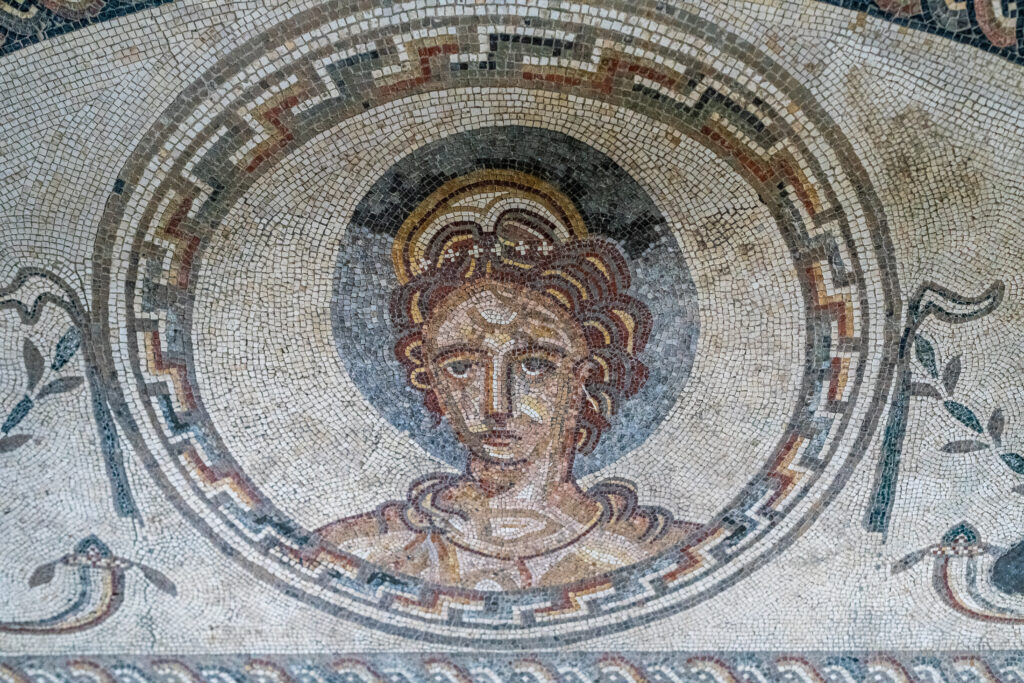
Hidden in the South Downs near Pulborough, Bignor Roman Villa is another extraordinary remnant of Roman Britain. Discovered in 1811 by a farmer ploughing his field, the villa contains some of the finest mosaics in the country, preserved in remarkable detail.
The mosaics include depictions of Venus, Medusa, and intricate geometric patterns, showcasing the artistry of Roman craftsmen. Their scale and sophistication indicate that the villa was the home of a wealthy landowner, perhaps part of Sussex’s Roman elite.
The villa’s rural setting adds to its charm. Surrounded by fields and rolling hills, it is easy to imagine how Roman settlers adapted to and shaped the Sussex countryside nearly two millennia ago. The site is managed with a light touch, allowing visitors to experience the mosaics in a setting close to their original context.
Bignor Villa is special because it combines intimacy with grandeur: a rural archaeological site that nonetheless reveals the cosmopolitan life of Roman Sussex.
Bodiam Castle
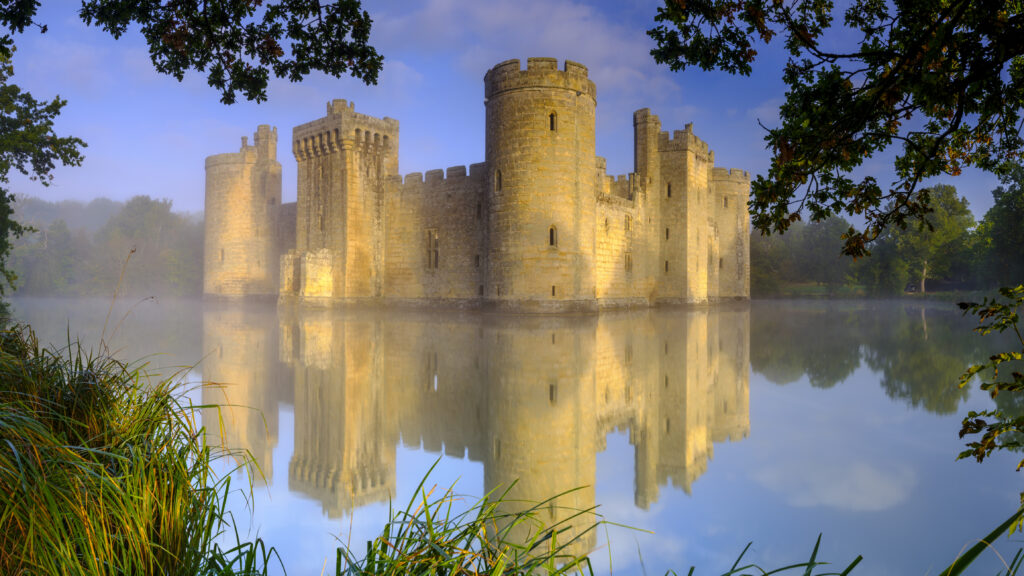
Few castles capture the imagination quite like Bodiam Castle, near Robertsbridge in East Sussex. Built in 1385 by Sir Edward Dalyngrigge, a former knight of Edward III, it is a masterpiece of medieval military architecture and romance.
Perfectly symmetrical, Bodiam is surrounded by a wide moat, its towers reflected in the still waters. Though partially ruined inside, the exterior remains almost intact, creating one of the most photogenic castles in England. Crossing the bridge to its gatehouse feels like stepping into a fairy tale.
Inside, remnants of the great hall, kitchens, and private chambers give a sense of medieval life, while exhibitions explain the castle’s history and defenses. Children and adults alike are captivated by its blend of fantasy and authenticity.
Bodiam’s magic lies in its completeness. It embodies the medieval ideal of a knight’s stronghold while enchanting the imagination. It is a place where history and myth intertwine, making it a highlight of any journey through Sussex.
Herstmonceux Castle
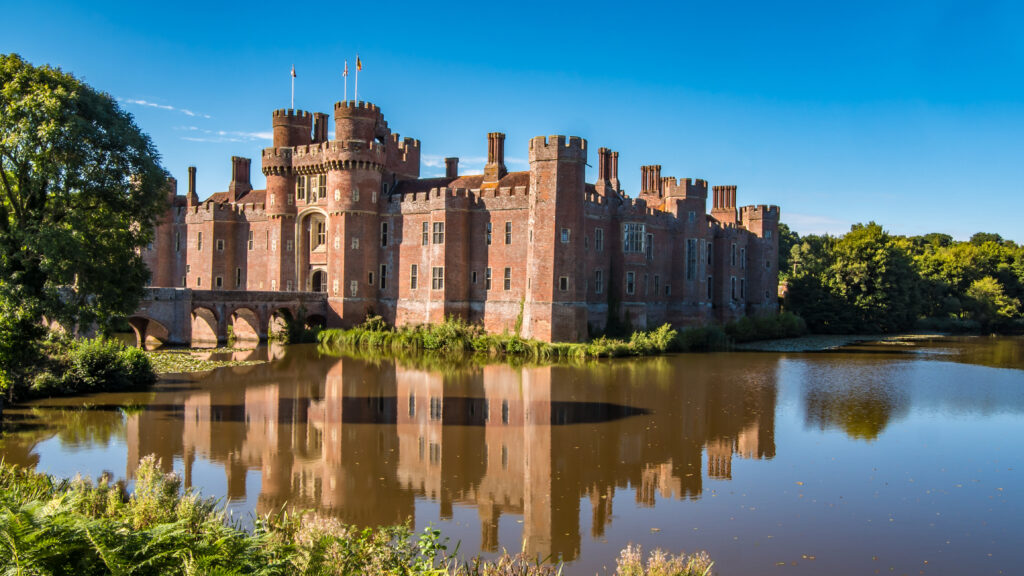
Amid the East Sussex countryside stands Herstmonceux Castle, a magnificent red-brick fortress unlike any other in the county. Built in the 15th century, it is one of the earliest major brick buildings in England, marking a shift from stone to more modern materials. Its deep red walls and battlements reflected in a wide moat give it a fairy-tale appearance.
Though the castle itself is now used as an international study centre and only partly accessible, the surrounding gardens and woodlands are open to the public and are truly enchanting. From formal Elizabethan-style gardens to tranquil woodland trails, the estate offers a blend of history and natural beauty. The grounds also feature quirky sculptures, secret pathways, and picnic areas.
Herstmonceux is not only about history—it is also associated with science. For decades, it housed the Royal Greenwich Observatory, connecting Sussex with astronomy and global research. Today, that spirit lives on with the castle’s science centre nearby.
It is this mix of romance, innovation, and nature that makes Herstmonceux Castle one of Sussex’s most distinctive landmarks.
Amberley Village

Nestled at the foot of the South Downs, Amberley is one of Sussex’s most charming villages. Flint cottages, thatched roofs, and narrow lanes give it an air of timelessness. At its heart lies Amberley Castle, now a luxury hotel, its fortified walls and gatehouse offering a glimpse of medieval grandeur.
But Amberley is also celebrated for the Amberley Museum, an open-air site dedicated to industrial heritage and crafts. Spanning 36 acres, it showcases traditional skills like pottery, blacksmithing, and printing, as well as exhibits on transport, communication, and rural trades. Old buses, steam engines, and working workshops bring history vividly to life.
Amberley combines the best of Sussex: the beauty of a South Downs village, the romance of a castle, and the richness of living history at the museum. It is a place where both rural and industrial traditions are honoured, making it unique in scope and charm.
Michelham Priory
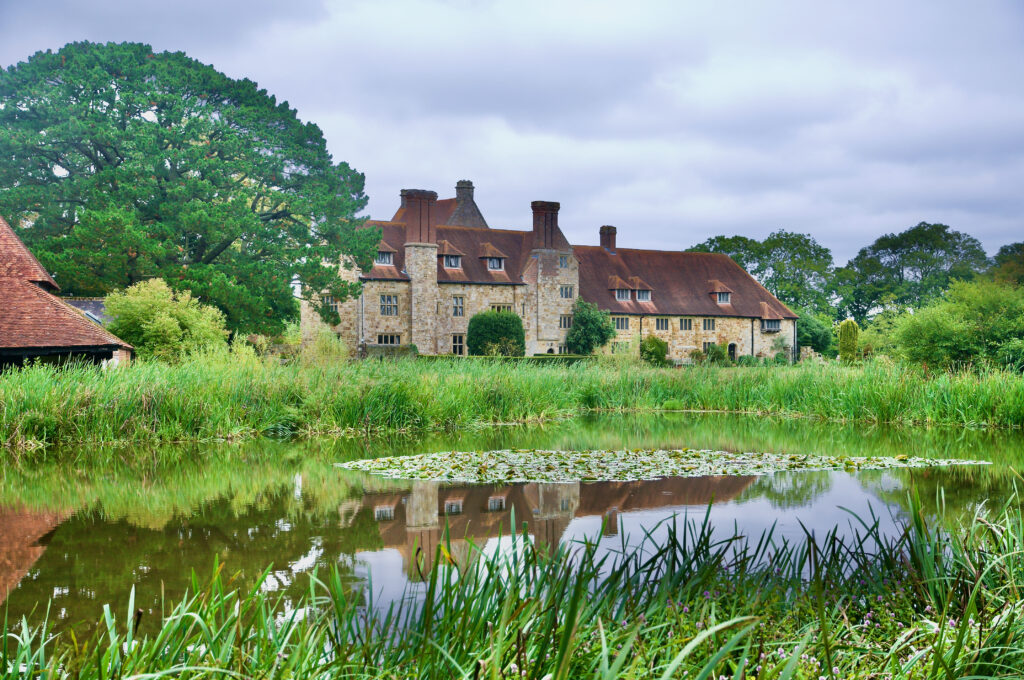
Surrounded by England’s longest medieval water-filled moat, Michelham Priory near Hailsham is a rare survival of monastic life. Founded in 1229 as an Augustinian priory, much of it was destroyed during the Dissolution of the Monasteries under Henry VIII, but its Tudor house, medieval buildings, and peaceful gardens remain.
The priory tells stories of faith, power, and change across centuries. Its atmospheric great barn, working watermill, and restored rooms give a vivid sense of life in both monastic and later periods. The gardens are equally captivating, featuring orchards, herb beds, and riverside walks.
Michelham Priory is also known for its legends: it is reputedly one of the most haunted sites in Sussex, with ghostly tales adding to its mystique. Yet beyond the stories, what endures is the sense of serenity created by its water, walls, and trees.
It is a place where history and nature are inseparable, inviting reflection and quiet exploration.
Ditchling
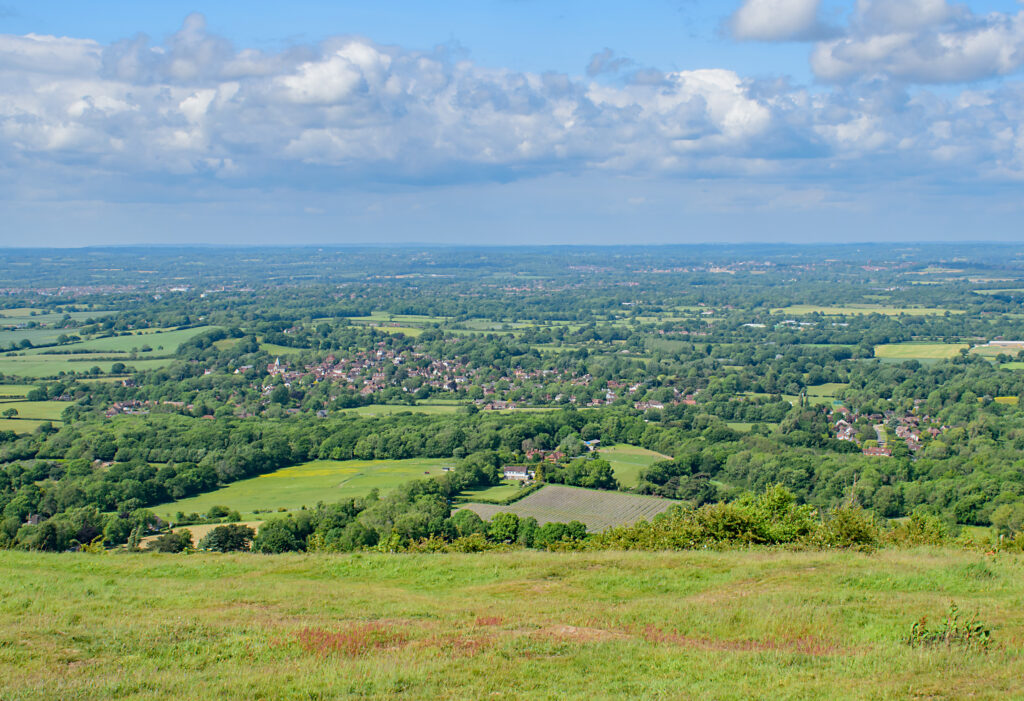
At the foot of the South Downs lies Ditchling, a village with an unusually rich cultural legacy. While it charms with its flint cottages, village green, and surrounding countryside, it is most famous for the community of artists and craftsmen who settled here in the early 20th century.
The Guild of St Joseph and St Dominic, founded by sculptor and typographer Eric Gill and others, turned Ditchling into a centre of the Arts and Crafts movement. Their belief in combining artistry with craftsmanship left a lasting impact, and today the Ditchling Museum of Art + Craft celebrates their work with world-class exhibitions.
Ditchling’s appeal is also geographical: the Ditchling Beacon nearby is one of the highest points on the South Downs, offering sweeping views across Sussex. The village itself remains tranquil, its history and creative spirit embedded in its cottages and workshops.
It is this blend of natural beauty and artistic heritage that makes Ditchling remarkable, a quiet place that has nonetheless shaped British design and craft.
Goodwood Estate
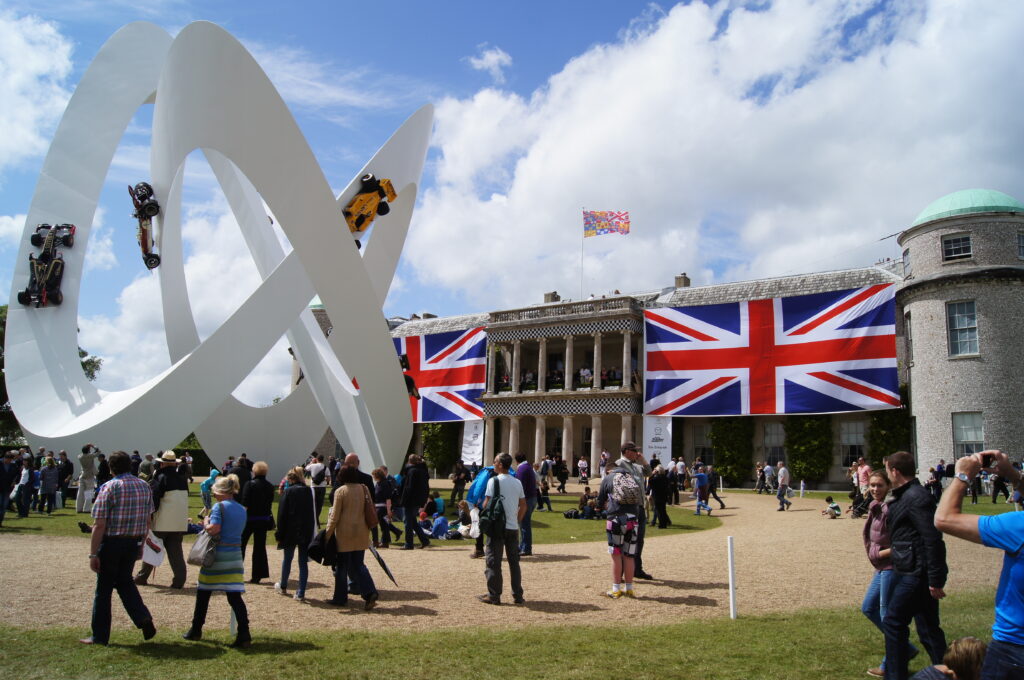
The Goodwood Estate, near Chichester, is one of Sussex’s most dynamic landmarks, combining history, sport, and culture in one extraordinary setting. At its heart is Goodwood House, the grand seat of the Dukes of Richmond for over 300 years. The house itself is a treasure, filled with fine art, furniture, and a sense of aristocratic grandeur.
Yet Goodwood is best known today for its world-class events. The Goodwood Festival of Speed attracts car enthusiasts from around the globe, celebrating motor racing heritage with dazzling displays of vehicles old and new. The Goodwood Revival, meanwhile, is a unique retro celebration where visitors dress in period fashion to relive the golden age of racing.
Goodwood also has a strong equestrian tradition. Its racecourse is one of the most beautiful in the world, perched on the Downs with sweeping views, while its golf course and flying school add to the variety of experiences.
What makes Goodwood so special is its energy: a traditional estate that has reinvented itself as a centre of innovation, style, and joy. It reflects the enduring vitality of Sussex.
Weald & Downland Living Museum
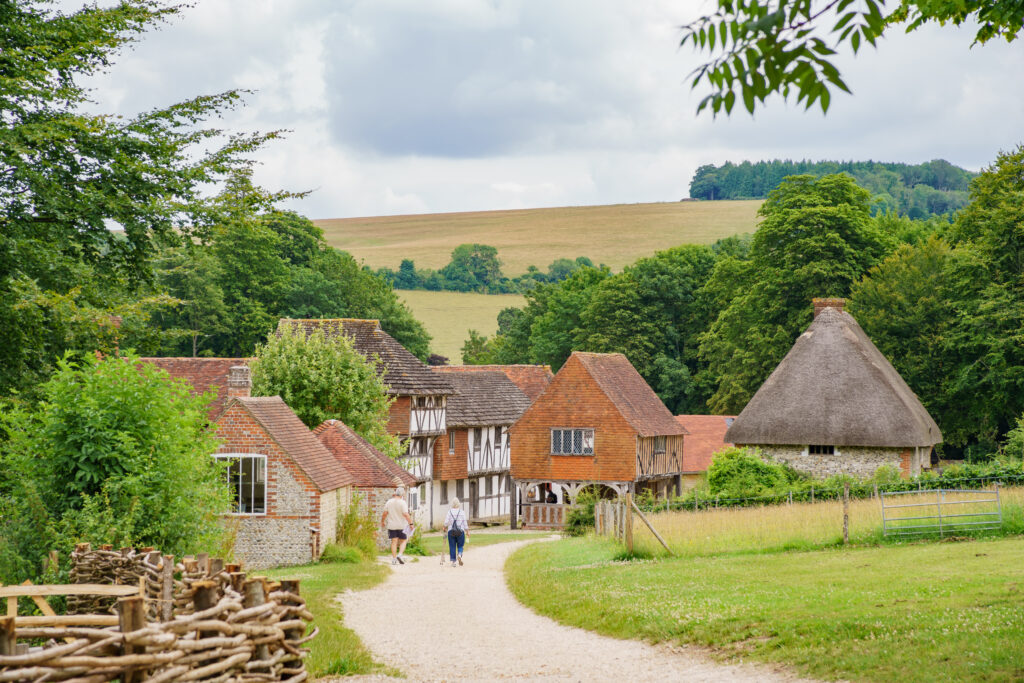
Set in 40 acres of the South Downs near Singleton, the Weald & Downland Living Museum is an open-air museum dedicated to rural history. It is a place where time slows down, allowing visitors to step directly into the past.
Over fifty historic buildings, painstakingly relocated from across southern England, recreate centuries of everyday life. From timber-framed medieval halls to Victorian cottages, each structure tells the story of those who lived and worked there.
The museum is alive with demonstrations: blacksmithing, milling, traditional cooking, and farming practices are regularly performed, bringing heritage to life. Seasonal events celebrate old customs and festivals, while the museum’s natural surroundings provide a fitting backdrop.
Known to many as the filming location for The Repair Shop, the museum blends authenticity with charm. It is not a static exhibition, but a living, breathing community of traditions, making it one of the most enriching cultural experiences in Sussex.
Nymans Gardens

Nymans, near Haywards Heath, is one of the most romantic gardens in England. Created in the late 19th and early 20th centuries by the Messel family, it blends formal design with wild beauty.
At its centre stands the atmospheric ruin of a Gothic-style house, partially destroyed by fire in 1947. The ruin adds a poignant charm, surrounded by lush gardens filled with rare plants, roses, herbaceous borders, and ornamental trees. Nymans is especially known for its rhododendrons, magnolias, and camellias, which bloom in dazzling displays.
The garden is also experimental, reflecting the Messel family’s passion for plant collecting from around the world. Its layout combines structured spaces with open views across the High Weald, creating a balance of order and natural splendour.
Nymans is both tranquil and inspiring. It is a place of beauty shaped by vision and resilience, where gardens and history merge seamlessly.
Wakehurst Place & the Millennium Seed Bank
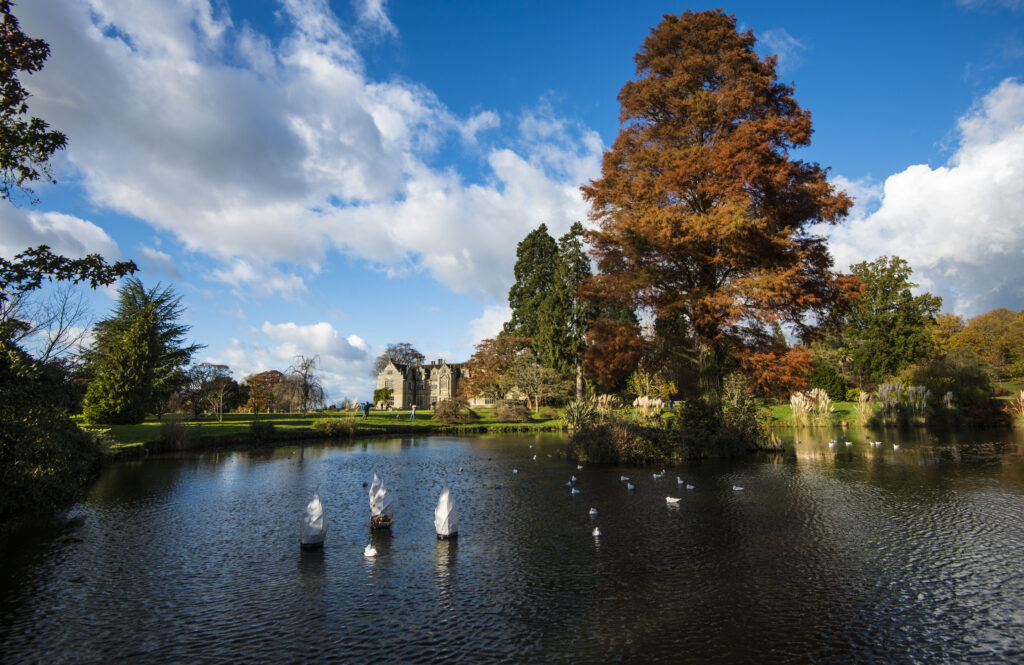
In the High Weald near Ardingly lies Wakehurst Place, a 500-acre estate managed by the Royal Botanic Gardens, Kew. It is sometimes called “Kew in the country” and offers landscapes that are as educational as they are beautiful.
Wakehurst is famed for the Millennium Seed Bank, the world’s largest wild plant conservation project. Beneath striking glass and steel vaults, billions of seeds are stored to safeguard biodiversity for the future. It is both a scientific marvel and a symbol of global responsibility.
The estate itself offers a variety of landscapes: formal gardens, wildflower meadows, woodlands, and wetlands. Its plant collections are rich and diverse, representing flora from across the globe. Seasonal displays ensure that Wakehurst is captivating year-round, from spring blossoms to autumn colour.
What makes Wakehurst extraordinary is its combination of beauty and purpose. It is not only a garden to enjoy, but also a place where the future of the planet’s plants is being preserved.
Seven Sisters Country Park
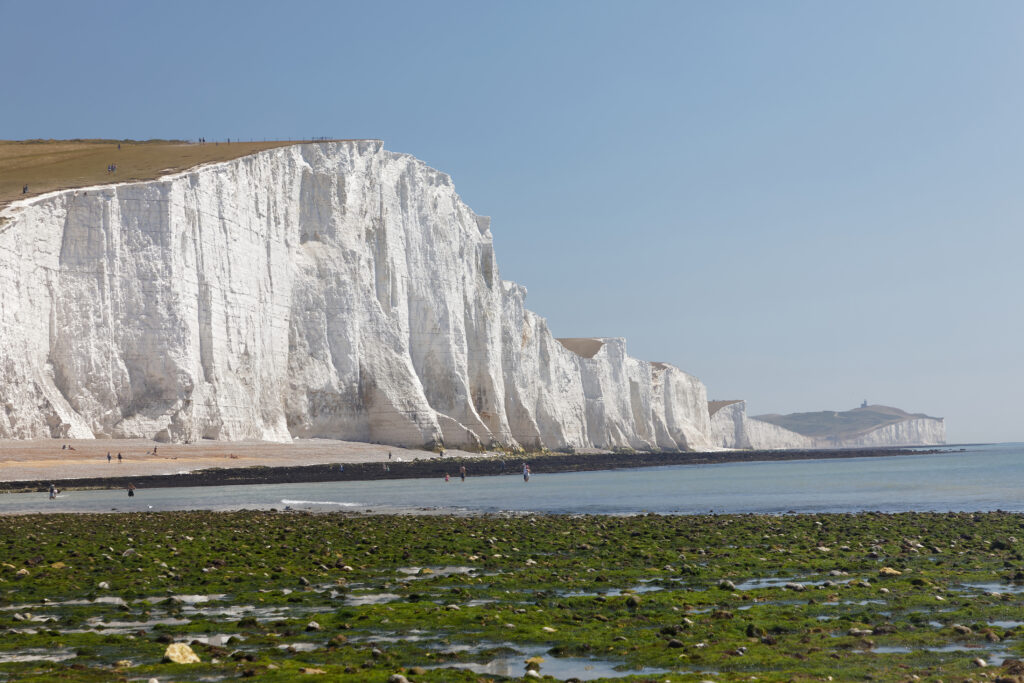
At the eastern edge of Sussex lies Seven Sisters Country Park, one of the finest places to experience the landscape of the South Downs. Encompassing 280 hectares of chalk cliffs, river valleys, and grassland, it is a haven for outdoor adventure.
The park includes the iconic Seven Sisters cliffs, but also the meandering Cuckmere River, whose oxbow lakes and floodplain create a unique landscape beloved by walkers, cyclists, and kayakers. Birdlife is abundant, and the changing seasons bring ever-shifting light and colour.
Unlike some coastal areas, the park feels wild and expansive. Sheep graze on the Downs, seabirds wheel overhead, and the sea stretches endlessly to the horizon. It is a place where one feels the scale of nature and the freedom of open space.
Seven Sisters Country Park embodies the essence of Sussex: dramatic, unspoiled, and deeply restorative. It is a fitting finale to a journey through a county of remarkable beauty and heritage.
Steyning
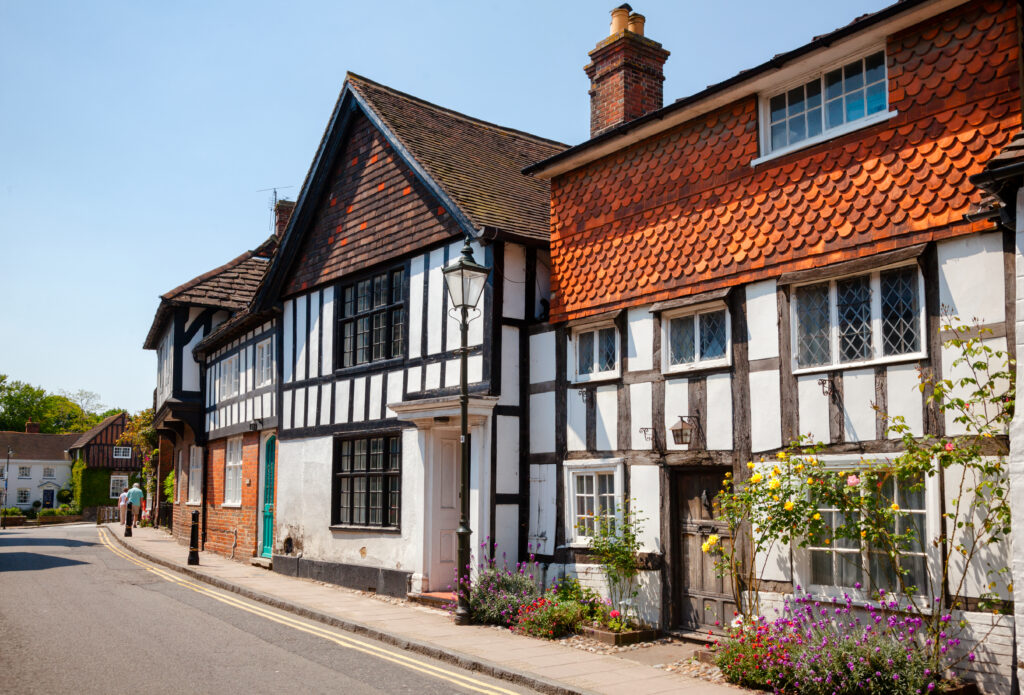
Nestled at the foot of the South Downs, Steyning is one of Sussex’s most picturesque small towns. With its timber-framed houses, flint cottages, and handsome Georgian frontages, the town centre feels like a step back in time. The High Street is particularly charming, lined with independent shops, cafés, and pubs that reflect the community’s strong local identity.
Steyning has deep historical roots. It was once a Saxon settlement of great importance, closely tied to the medieval Abbey of Fécamp in Normandy. The Church of St Andrew and St Cuthman, founded in the 8th century, recalls this era, standing as one of Sussex’s oldest and most impressive parish churches.
Today, Steyning is equally known for its cultural life. It hosts the Steyning Festival, a lively celebration of arts, literature, and music that brings the community together every other year. For walkers and cyclists, the town is perfectly placed, with direct access to the South Downs Way offering scenic routes across rolling hills and river valleys.
What makes Steyning special is its balance: a place of living history that feels neither frozen nor overly modernised. It is welcoming, tranquil, and beautiful, embodying the best of small-town Sussex life.
Worthing
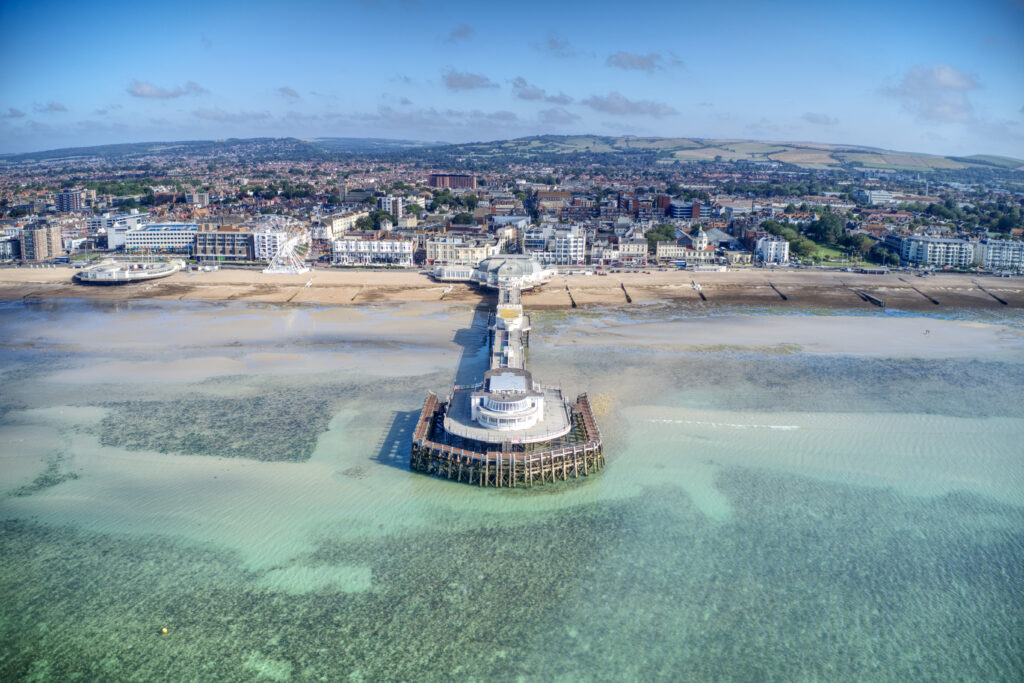
Once a humble fishing village, Worthing has grown into a vibrant seaside town that combines Edwardian elegance with modern cultural energy. Its seafront promenade, lined with palm trees and dotted with art installations, offers panoramic views of the Channel. The wide pebble beaches are perfect for walks, and in summer they attract swimmers, paddleboarders, and families enjoying the classic British seaside.
At its centre is the Worthing Pier, voted Britain’s best in recent years. Its art deco pavilion and modern amusements make it both nostalgic and contemporary. The town also boasts an impressive cultural scene, with the Connaught Theatre and Worthing Museum and Art Gallery providing spaces for drama, film, and exhibitions.
Worthing’s popularity has risen in recent years, particularly with younger families and creatives drawn to its affordable charm and proximity to Brighton. Independent shops, vintage stores, and a growing café culture have transformed the town into a lively hub while retaining its relaxed seaside feel.
What sets Worthing apart is its accessibility: it is large enough to offer variety, yet intimate enough to feel personal. Combined with the South Downs as its backdrop, Worthing represents the evolving face of Sussex’s coast—traditional, stylish, and welcoming.
Midhurst
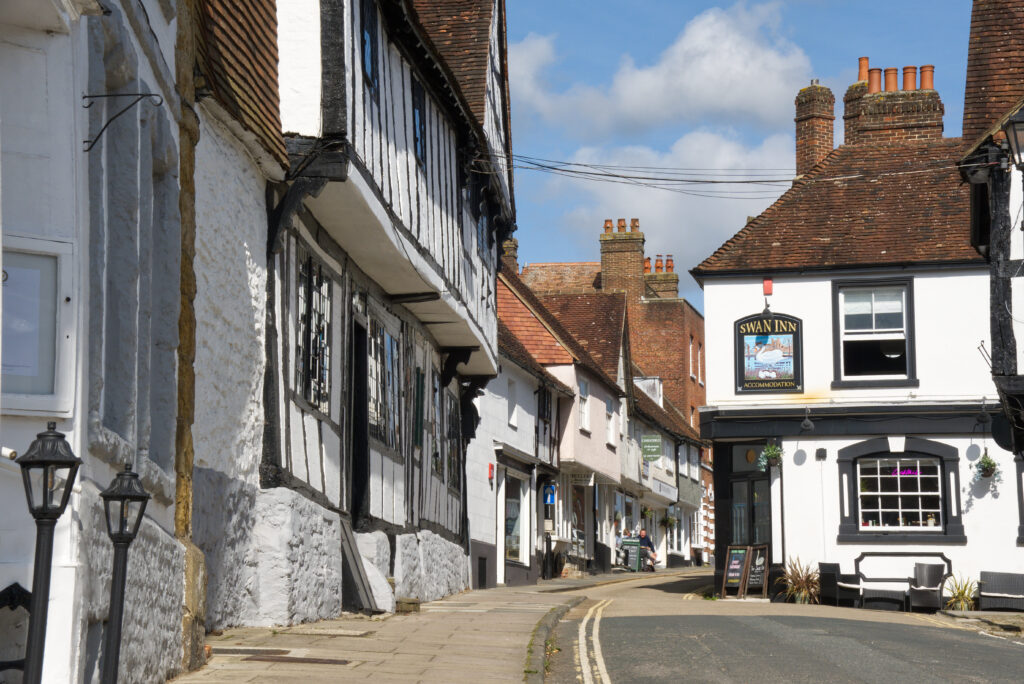
Set in the heart of the South Downs National Park, Midhurst is a market town with a rich tapestry of history and architecture. Its winding streets reveal medieval timber-framed houses, Tudor facades, Georgian brickwork, and Victorian detail, creating a visual story of England’s past in one compact town.
Midhurst is perhaps most famous for Cowdray Ruins, the remains of one of England’s great Tudor houses. Once visited by Henry VIII and Elizabeth I, it was devastated by fire in 1793, but its romantic shell still dominates the town’s landscape. The surrounding Cowdray Estate remains a centre of activity, especially for polo, hosting international tournaments that bring glamour and excitement to the Sussex countryside.
The town itself is full of independent shops, antiques dealers, and inviting tearooms. It is also a gateway for exploring the South Downs, with walks leading directly from the town into rolling hills, meadows, and woodlands.
Midhurst combines the grandeur of history with the intimacy of a small town. It is both refined and unpretentious, offering culture, heritage, and natural beauty in equal measure. For many, it represents the very heart of rural Sussex.
Bosham
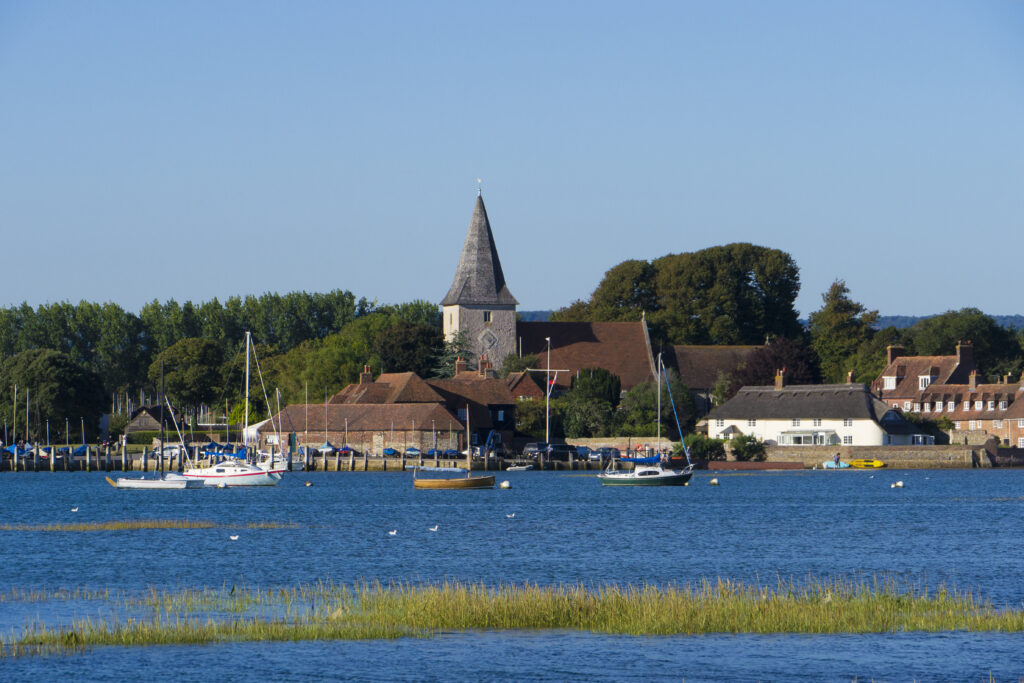
On the edge of Chichester Harbour lies Bosham, one of Sussex’s most evocative coastal villages. With its tidal quays, flint cottages, and sailboats bobbing on calm waters, Bosham feels timeless. At high tide, the sea laps directly onto the main road, reminding visitors of the village’s intimate connection with the tides.
Bosham has an extraordinary history. It appears in the Bayeux Tapestry, associated with Harold Godwinson before his fateful journey to Normandy in 1064. The village’s Holy Trinity Church is one of the oldest in Sussex, with Saxon origins and a tranquil churchyard that has inspired countless artists and photographers.
Beyond history, Bosham is beloved for its natural setting. It is part of the Chichester Harbour Area of Outstanding Natural Beauty, where saltmarshes and mudflats attract an abundance of birdlife. Walkers and sailors alike find Bosham a perfect base, with footpaths along the shore and small harbourside cafés offering a place to pause.
Bosham is not a busy resort but a quiet, contemplative place. It invites reflection on centuries past while offering the simple pleasures of sea air, gentle views, and historic charm.

